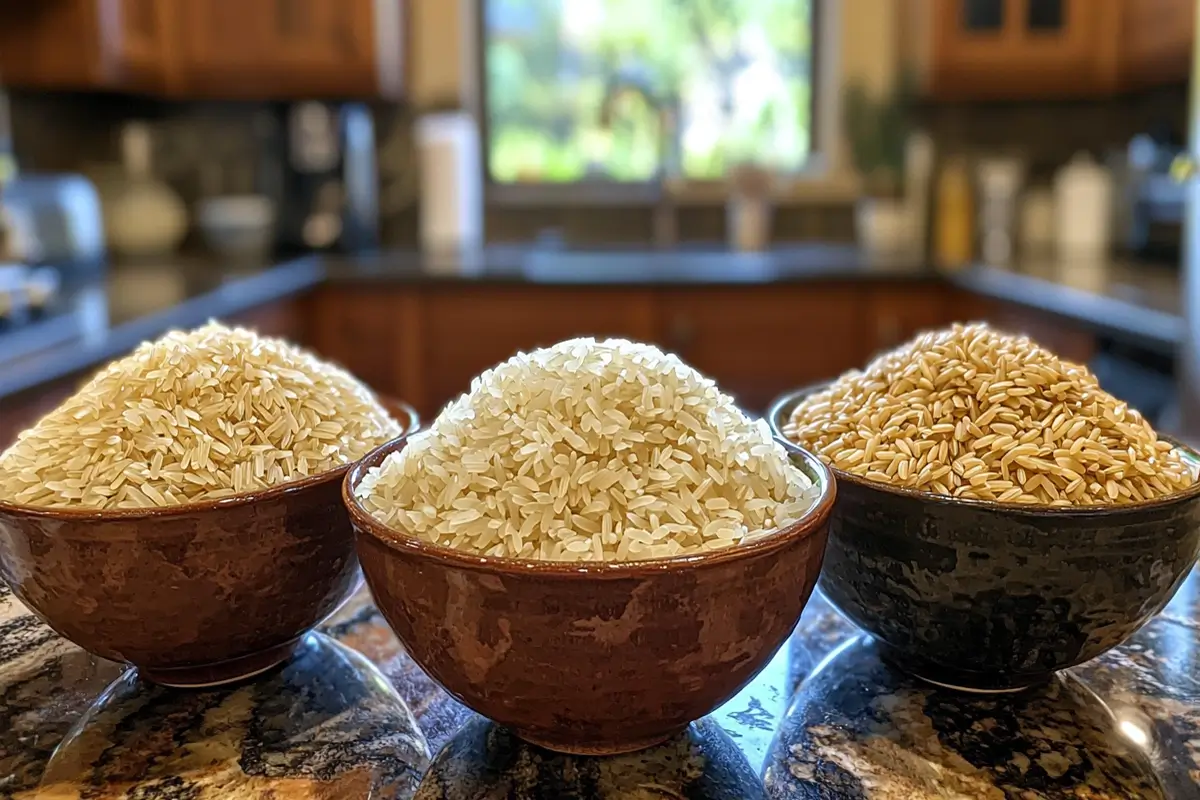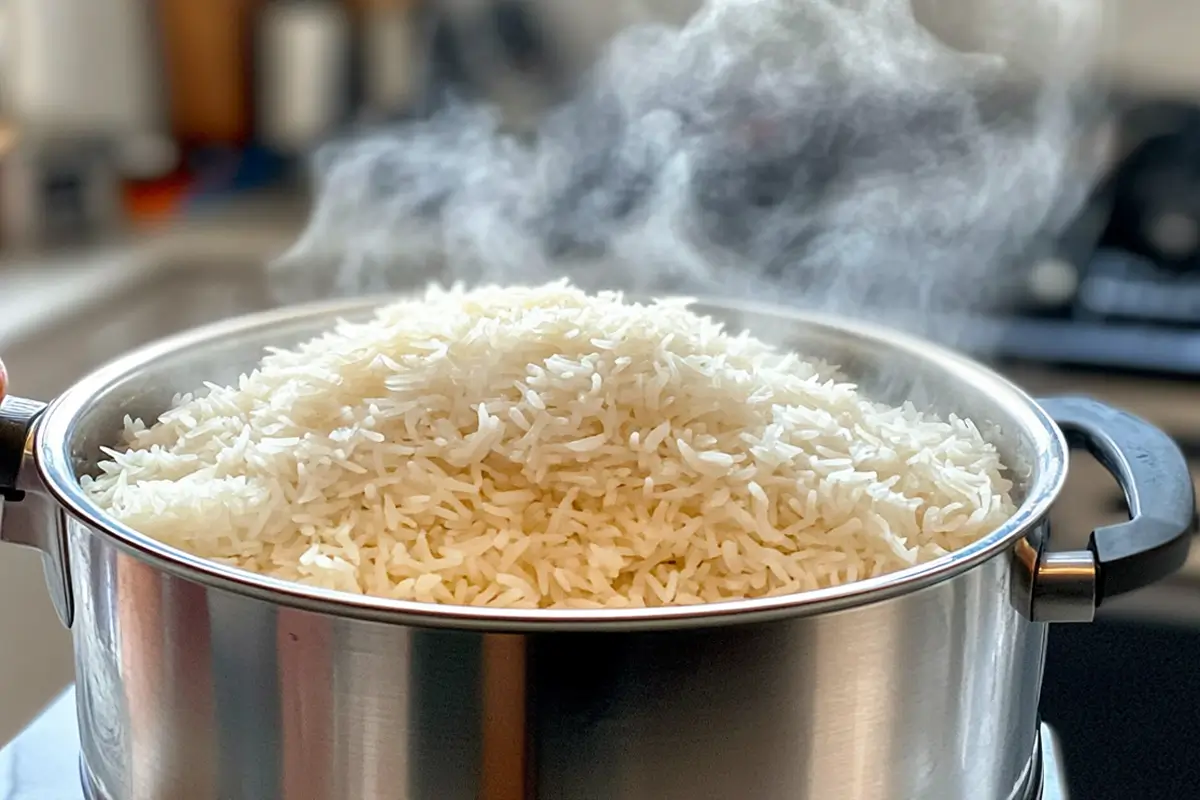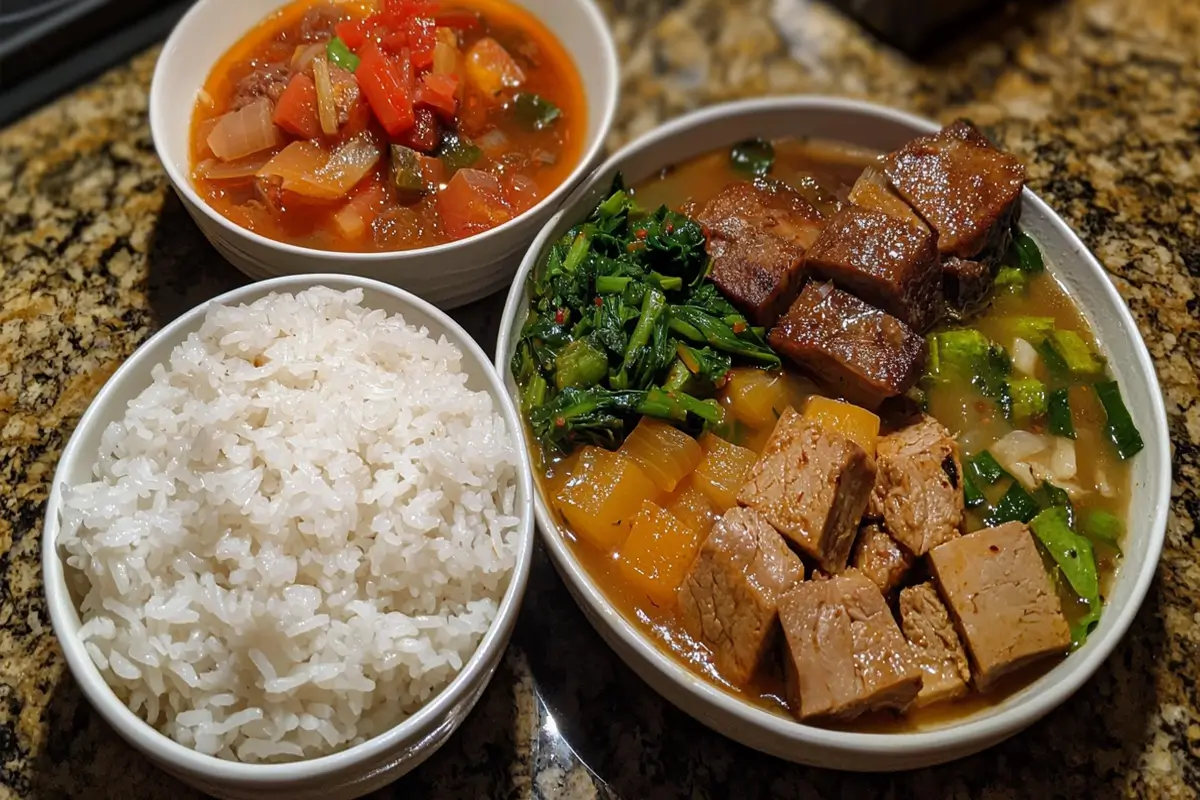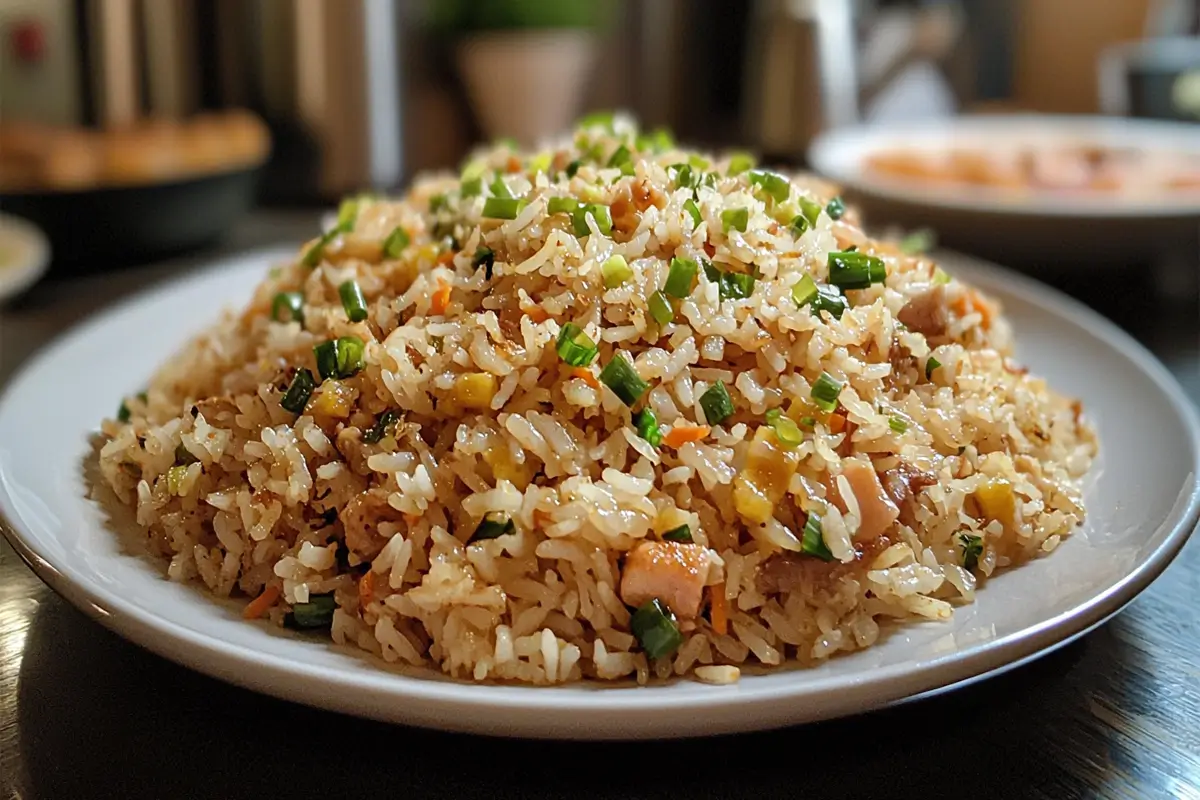Filipino steamed rice is more than just a side dish; it’s the cornerstone of Filipino cuisine. As a staple food, it accompanies almost every meal, from savory adobo to sour sinigang. Mastering the art of cooking perfect, fluffy rice is essential for anyone looking to truly experience Filipino flavors. This ultimate guide will walk you through every step, ensuring you achieve the best Filipino steamed rice every time. Get ready to say, “Kain na!” (Let’s eat!) as you embark on this culinary journey.
The Essence of Filipino Rice Culture
Rice holds a special place in the hearts and homes of Filipinos. It’s more than just sustenance; it’s a cultural symbol, a source of comfort, and a link to the past. The history of rice cultivation in the Philippines dates back thousands of years, with evidence suggesting its presence even before the arrival of Spanish colonizers.
The cultural importance of rice is deeply woven into the fabric of Filipino society. Rice terraces, such as those in Banaue, stand as a testament to the ingenuity and resourcefulness of indigenous communities. These terraces are not merely agricultural feats but also UNESCO World Heritage sites, symbolizing the harmonious relationship between people and nature.
Rice is a daily staple for Filipinos, often consumed three times a day. It is paired with a wide array of dishes, from the simplest fried egg to the most elaborate fiesta fare. No Filipino celebration is complete without rice, signifying abundance and prosperity. Its versatility and neutral flavor make it the perfect canvas for the bold and diverse flavors of Filipino cuisine.
Choosing the Right Rice

Selecting the right type of rice is the first step toward achieving perfect steamed rice. Different varieties offer distinct textures and flavors that can enhance your dining experience. Here are some commonly used types of rice in Filipino cuisine:
- Long Grain Rice (e.g., Dinorado): Known for its slender grains and fluffy texture when cooked, Dinorado is a popular choice for everyday meals. It’s less sticky than other varieties, making it ideal for dishes where individual grains are desired.
- Medium Grain Rice (e.g., Sinandomeng): This variety has a slightly shorter and plumper grain compared to long grain rice. Sinandomeng rice tends to be softer and slightly stickier, providing a satisfying mouthfeel.
- Short Grain Rice (e.g., Malagkit/Glutinous Rice): Primarily used for desserts and snacks, short grain rice, or malagkit, is characterized by its high starch content, resulting in a sticky and chewy texture when cooked. It’s the key ingredient in popular Filipino treats like biko and suman.
- Brown Rice: An increasingly popular healthy alternative, brown rice retains the bran and germ layers, providing a nuttier flavor and a higher fiber content compared to white rice.
Factors to consider when choosing rice include starch content, aroma, and texture. Starch content affects the stickiness of the rice, while aroma and texture contribute to the overall sensory experience.
In the U.S., you can find good quality rice in Asian supermarkets, specialty grocery stores, and even some mainstream supermarkets. Look for brands that are known for their quality and consistency, and always check the expiration date to ensure freshness.
Essential Equipment for Perfect Steamed Rice
Having the right equipment can make a significant difference in the outcome of your steamed rice. While a rice cooker is the most convenient option, stovetop cooking can also yield excellent results with the proper tools.
- Rice Cooker vs. Stovetop Method: A rice cooker automates the cooking process, ensuring consistent results with minimal effort. The stovetop method requires more attention but allows for greater control over the cooking process.
- Measuring Cups and Spoons: Accurate measurements are crucial for achieving the correct rice-to-water ratio. Use standard measuring cups and spoons for consistent results.
- Fine-Mesh Sieve or Colander: Rinsing the rice is essential for removing excess starch, and a fine-mesh sieve or colander makes this process easier and more efficient.
- Pots and Pans (if using stovetop): Choose a heavy-bottomed pot with a tight-fitting lid to ensure even cooking and prevent moisture loss.
- Other Useful Tools: A rice paddle or spatula is handy for fluffing the rice and serving it without damaging the grains.
The Classic Filipino Steamed Rice Recipe (Detailed Instructions)

Now, let’s dive into the heart of the matter: cooking the perfect Filipino steamed rice. This recipe focuses on using long-grain rice, a staple in many Filipino households. For a slightly different take on this classic, you can find another variation at Filipino Steamed Rice Cebu Style, offering a unique regional flavor profile.
Ingredients List (with Quantities):
- 2 cups of uncooked long-grain rice (e.g., Jasmine or Dinorado)
- 2 ½ cups of water (adjust based on rice type)
Step-by-Step Instructions:
- Rinsing the Rice: Rinsing the rice is a crucial step that many overlook. It removes excess starch, which can lead to sticky or gummy rice. To rinse the rice properly, place it in a fine-mesh sieve or colander and rinse under cold running water. Gently rub the grains with your hands to release the starch. Continue rinsing until the water runs clear. This usually takes about 2-3 minutes.
- Measuring Water: The correct rice-to-water ratio is essential for achieving fluffy rice. For long-grain rice, a ratio of 1 part rice to 1.25 parts water is generally recommended. However, you may need to adjust the ratio based on your rice type and personal preference.
- Cooking in a Rice Cooker:
- Adding rice and water to the cooker: After rinsing the rice, transfer it to the rice cooker. Add the measured amount of water. Ensure that the rice is evenly distributed in the cooker.
- Turning it on and waiting for the signal: Close the lid of the rice cooker and turn it on. Most rice cookers have a simple on/off switch or a “cook” button. Wait for the rice cooker to switch to the “warm” setting, which indicates that the rice is cooked. This usually takes about 20-25 minutes.
- Resting the rice for optimal texture: Once the rice cooker switches to the “warm” setting, resist the urge to open it immediately. Allow the rice to rest for at least 10 minutes. This allows the steam to redistribute, resulting in a more even and fluffy texture.
- Cooking on the Stovetop:
- Bringing water to a boil: In a heavy-bottomed pot, bring the measured amount of water to a rolling boil over high heat.
- Adding rice, reducing heat, and simmering: Once the water is boiling, add the rinsed rice to the pot. Stir gently to ensure that the rice is evenly distributed. Reduce the heat to low, cover the pot with a tight-fitting lid, and simmer for 18-20 minutes.
- Checking for doneness and adjusting accordingly: After 18 minutes, check the rice for doneness. The rice should be tender and the water should be fully absorbed. If the rice is still too wet, cook for a few more minutes, checking frequently to prevent burning. If the rice is too dry, add a tablespoon or two of water and continue cooking until the desired consistency is reached.
- Resting the rice off-heat: Once the rice is cooked, remove the pot from the heat and let it rest, covered, for 10 minutes. This allows the steam to redistribute and the rice to finish cooking.
Visual cues for perfect rice include grains that are separate, fluffy, and slightly moist. Avoid rice that is mushy, sticky, or burnt.
Tips and Tricks for Achieving the Best Steamed Rice
Achieving perfect steamed rice requires attention to detail and a few insider tips. Here are some tricks to elevate your rice-cooking game:
- Adjusting Water Ratio Based on Rice Type: Different types of rice require different amounts of water. Experiment with the water ratio to find the perfect balance for your preferred rice variety.
- Preventing Sticky Rice: To prevent sticky rice, rinse the rice thoroughly before cooking. You can also add a teaspoon of lemon juice or vinegar to the cooking water, which helps to separate the grains.
- Achieving the Perfect Fluffiness: Fluff the rice with a rice paddle or fork immediately after cooking. This releases excess steam and prevents the rice from clumping together.
- Dealing with Common Problems (e.g., Burnt Rice): If you accidentally burn the rice, don’t despair! Immediately remove the pot from the heat and place a slice of bread on top of the rice. Cover the pot and let it sit for 10-15 minutes. The bread will absorb the burnt flavor and odor. Be careful not to scrape the bottom of the pot when serving.
- Flavor Enhancements:
- Adding a Pandan Leaf: For a fragrant and aromatic twist, add a pandan leaf to the rice cooker or pot while cooking. The pandan leaf imparts a subtle, floral aroma that enhances the overall flavor of the rice.
- Using Chicken Broth instead of Water: Substitute water with chicken broth for a richer, more savory flavor.
- A dash of salt: Adding a dash of salt to the cooking water can enhance the natural flavor of the rice.
-
Flavor Enhancements: You can serve the cooked steamed rice with a side of kung pao brussels sprouts to add a spicy kick to your rice. Or, to enhance the overall flavor, accompany rice with savory stove-top stuffing meatloaf recipe.
Serving Suggestions

Filipino steamed rice is incredibly versatile and can be paired with a wide variety of dishes. Here are some classic and creative serving ideas:
- Classic Filipino Dishes to Pair With:
- Adobo: A quintessential Filipino dish consisting of meat (usually chicken or pork) braised in soy sauce, vinegar, garlic, and peppercorns.
- Sinigang: A sour and savory soup made with tamarind broth and a variety of meats and vegetables.
- Lechon: A whole roasted pig, known for its crispy skin and succulent meat.
- Kare-Kare: A rich and flavorful stew made with peanut sauce, oxtail, and a medley of vegetables.
- Creative Serving Ideas:
- Rice Bowls: Create a balanced and satisfying meal by topping rice with grilled meats, sautéed vegetables, and a flavorful sauce.
- Fried Rice Variations: Transform leftover rice into a delicious fried rice dish by adding vegetables, meats, and seasonings.
- Rice as a Base for International Cuisine: Use Filipino steamed rice as a base for other Asian cuisines, such as stir-fries, curries, and noodle dishes.
- Filipino steamed rice is a great base for various fusion dishes. A fun and creative fusion is making use of the rice with Hamburger Helper Beef Stroganoff, turning classic Filipino steamed rice into a hearty and flavorful dish.
Variations of Steamed Rice
While plain steamed rice is a staple, there are also several variations that add flavor and excitement to your meals:
- Garlic Rice (Sinangag): A popular breakfast dish made by frying cooked rice with garlic and oil.
- Bagoong Rice: Rice stir-fried with bagoong (fermented shrimp paste), mangoes, onions, and tomatoes.
- Adobo Rice: Rice cooked with adobo sauce, giving it a rich and savory flavor.
- Other Regional Variations: Explore different regional variations of steamed rice, such as arroz caldo (rice porridge) and suman (sticky rice cake). For a unique twist, you can add a side of cheesy smashed potatoes recipe for a rich and creamy addition to your meal.
Health Benefits of Rice
Rice is a good source of carbohydrates, providing energy for daily activities. It also contains essential nutrients, such as vitamins and minerals.
- Nutritional Value: Rice is a source of carbohydrates, which provide energy for the body. It also contains small amounts of protein, vitamins, and minerals.
- Energy Source: As a primary source of carbohydrates, rice provides fuel for the body’s cells and tissues.
- Fiber Content (especially in brown rice): Brown rice is a good source of dietary fiber, which aids in digestion and promotes satiety.
- Considerations for Different Diets: While rice is a staple food for many cultures, it’s important to consider portion sizes and dietary needs. People with diabetes or those following low-carb diets may need to moderate their rice consumption.
FAQs
- How do Filipinos cook rice?Filipinos typically cook rice using a rice cooker for convenience or on the stovetop in a pot with a tight-fitting lid. The key is to rinse the rice beforehand and use the correct water-to-rice ratio.
- What is steamed rice called?In the Philippines, steamed rice is simply called “rice” or “kanin” in Tagalog. It’s understood that rice is typically steamed.
- How to say steamed rice in Tagalog?To say “steamed rice” in Tagalog, you would say “kanin.”
- What is the difference between steamed rice and boiled rice?Steamed rice is cooked using a measured amount of water that is fully absorbed during the cooking process, resulting in fluffy grains. Boiled rice, on the other hand, is cooked in excess water that is drained off after cooking, which can result in a less distinct texture.
Conclusion
Mastering the art of cooking Filipino steamed rice is a rewarding culinary skill that unlocks a world of flavorful possibilities. By choosing the right rice, following the steps carefully, and incorporating the tips and tricks shared in this guide, you can achieve perfect, fluffy rice every time. So, gather your ingredients, put on your apron, and get ready to say, “Kain na!” Share your rice-cooking experiences and favorite Filipino dishes in the comments below!

